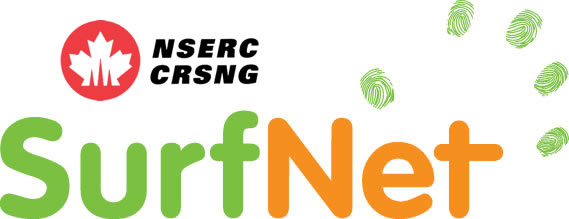An Exploration of Terrain Visualization Techniques on an Interactive Tabletop
Traditionally, terrain analysis has been performed on 2D paper maps using contour lines, and shaded colours representing slope, relief, elevation, etc. Digital maps have brought new techniques, such as viewshed, line-of-sight, and simulated panoramic views. However, these systems are complicated to learn and require extensive training to be used effectively.
Also, small amounts of work have been done evaluating the usability of these techniques, and little guidelines exist for designing systems for specific tasks in terrain analysis.
New digital technologies, like interactive tabletops and tablets, show great promise for working with geospatial information.
Terrain analysis is required in a wide variety of applications including, urban planning, military strategy, communications, wildlife observatories, golf course design, and search and rescue. The techniques that are available help users make informed decisions. With new hardware supporting digital maps, such as tabletops and tablets, becoming more abundant and affordable, there may be new ways to tackle problems with terrain analysis and improve upon current techniques.
Current tools for terrain analysis are for the most part based on sophisticated Geographic Information Systems (GIS) tools which require significant training to use effectively. By providing easy-to-use visualization techniques, more people may be able to participate in terrain analysis, while lowering training time and cost.
Building on knowledge of tools in current GIS, we have designed and developed three novel interaction techniques. These tools were created to work with a large interactive surface. The tabletop shows a digital terrain from a planimetric (top-down) view.
An enhanced viewshed widget can be controlled via touch, and can be dragged around to any point on the map. It can be easily oriented and shows real time line-of-sight information. The second technique is a panoramic view tied to the viewshed. It shows a 1:1 representation of the viewshed in a first-person perspective, also tracked in real-time.
The third technique involves an optically tracked tablet, showing a bird’s-eye view of the terrain based on the tablet’s position above the tabletop. This provides an easy-to-use, intuitive tool to navigate the terrain, controlled by physical movement. The tablet’s physical affordance makes it easy to set down, and pick up only when needed. The tablet is also able to show specific details about the terrain when it’s held close to the tabletop, but can be pulled back to provide an overview of the terrain.
However, there are some notable shortcomings of the tablet technique. Firstly, it can only be used around a tabletop equipped with optical trackers. Secondly, it may become tiresome to users if used for a lot of the time (constantly picking up and setting down). Thirdly, you can’t see what’s happening on the tabletop, and more importantly it is designed for a single user. Although, the vertical display could be set to mimic the display of the tablet and it could easily be designed for collaboration.
Currently, we are conducting a study to determine the usability of the techniques.



